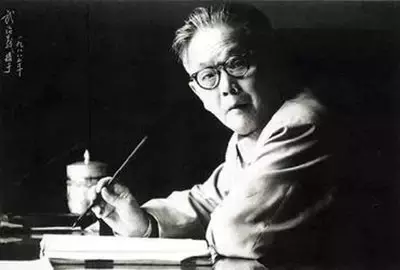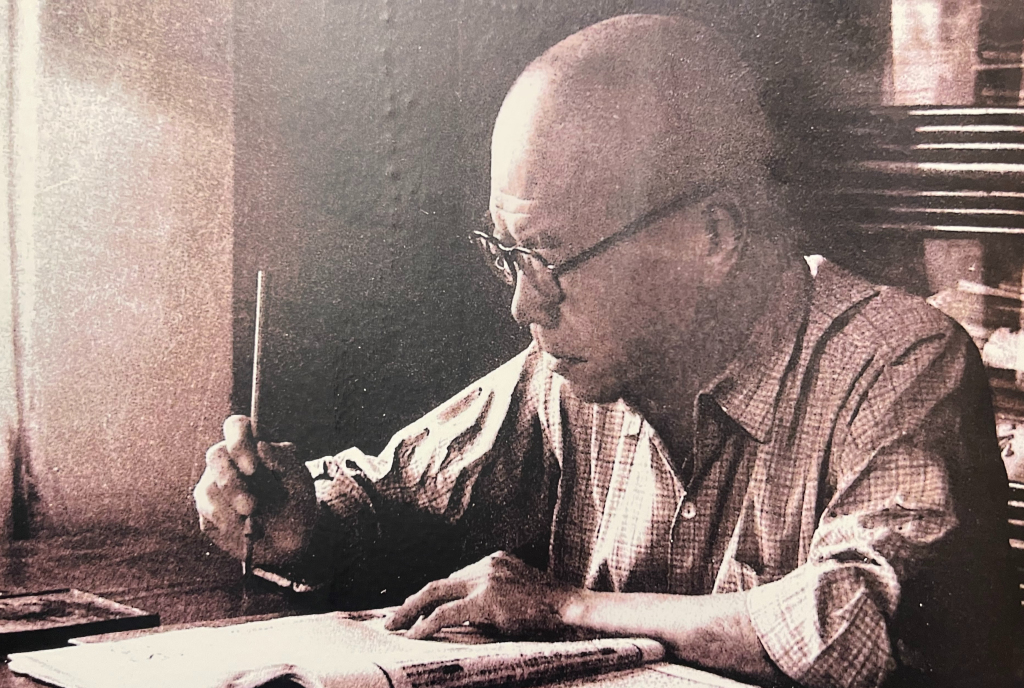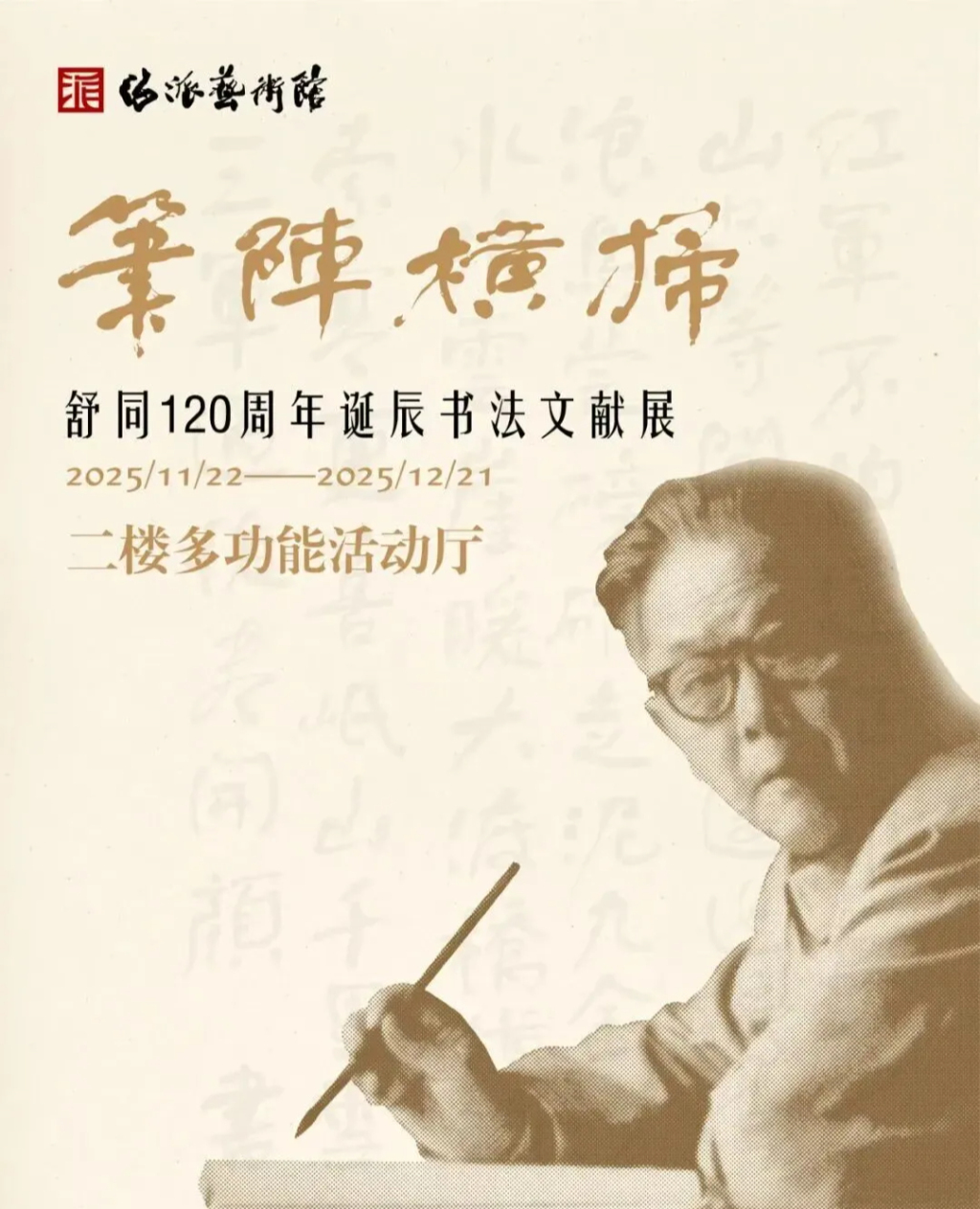
During the War of Resistance Against Japan, he wrote the inscription "China Anti-Japanese Military and Political University" at the instruction of Chairman Mao Zedong. In Shanghai after 1949, he also wrote the inscription for the railway hub "Shanghai Station" as well as East China Normal University and Tongji University, which are still in use today. The two characters "Shanghai" written by Shu Tong have become the city's iconic font, and his calligraphy has long been integrated into the fabric of the city of Shanghai.
Shu Tong (1905-1998) was a renowned revolutionary and a household name calligrapher, whose style of calligraphy is known as the "Shu Style." He was praised by Chairman Mao Zedong as a "Red Army calligrapher," a "horseback calligrapher," and "a leading figure in the Party's calligraphy." He was the first chairman of the China Calligraphers Association. On November 22nd, to commemorate the 120th anniversary of Shu Tong's birth, the "Sweeping Strokes of the Brush—A Documentary Exhibition Commemorating the 120th Anniversary of Shu Tong's Birth" and an academic exchange meeting, supported by the China Calligraphers Association and the Shanghai Calligraphers Association, and hosted by the Shanghai Literary Critics Association, the Haipai Art Museum, and other institutions, were held at the Shanghai Haipai Art Museum. The event combined documentary displays with academic exchanges to comprehensively examine Shu Tong's artistic achievements and the spirit of his era that permeated his life through calligraphy and painting.

Shu Tong (1905-1998)

Exhibition site
This exhibition showcases textual introductions to Shu Tong's major life events, photographs from various periods, published collections of works, reading annotations, stationery, as well as some plaques, rubbings of inscriptions, and reproductions of calligraphy and paintings. Among the exhibited works, the earliest is a calligraphy plaque inscribed with "Zhang Guo Yan Nian" (reproduction), written by Shu Tong when he was in his twenties, entirely in the Yan style, characterized by its dignified and steady nature.

"The Longevity of the State with a Staff"
At the exhibition, The Paper saw that the calligraphy brushes, inkstones, and reading notes used by Shu Tong during his lifetime seemed to bring him to life. Among them, the pages of two books were densely filled with his reading reflections.
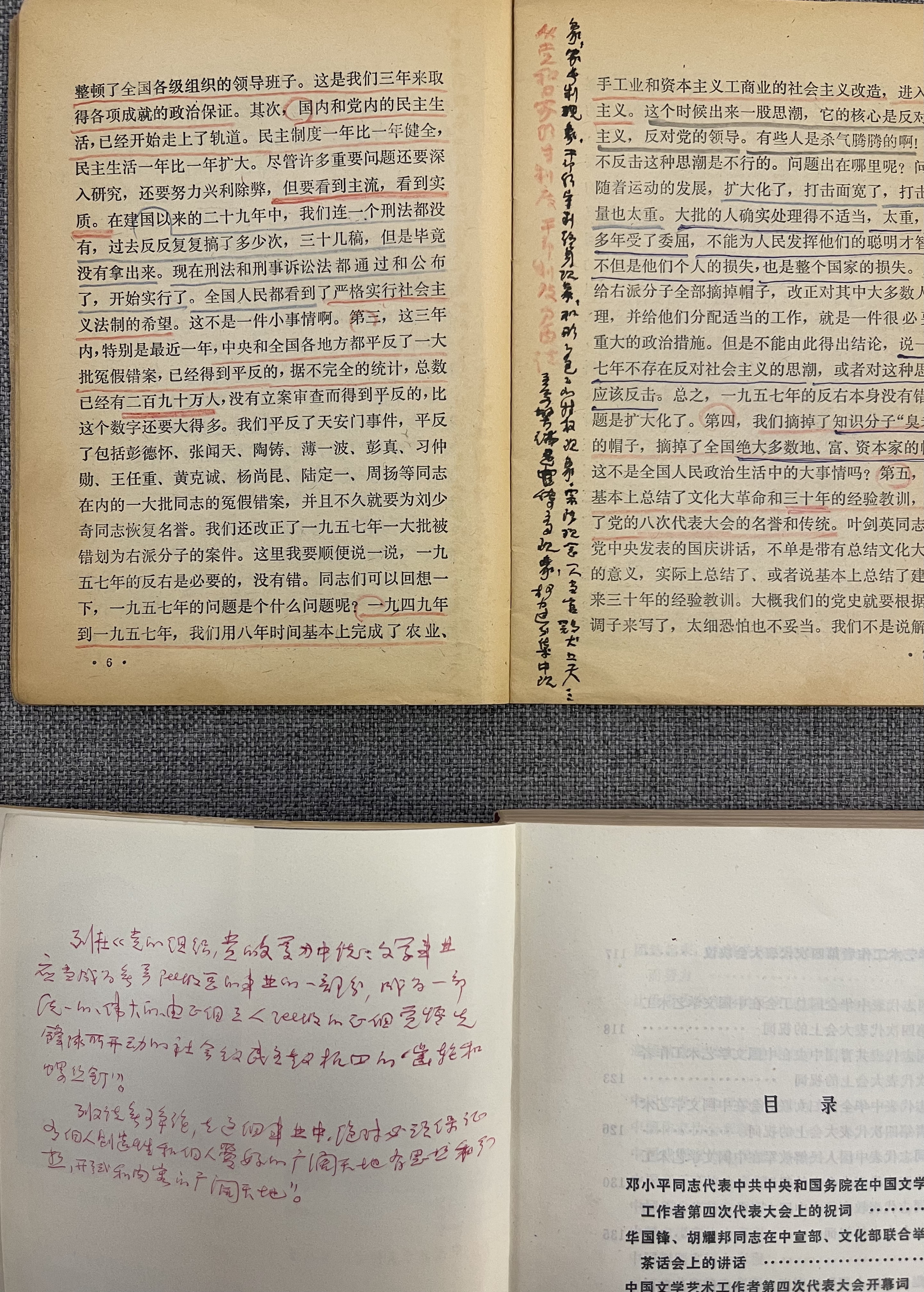
Shu Tong's reading notes on display
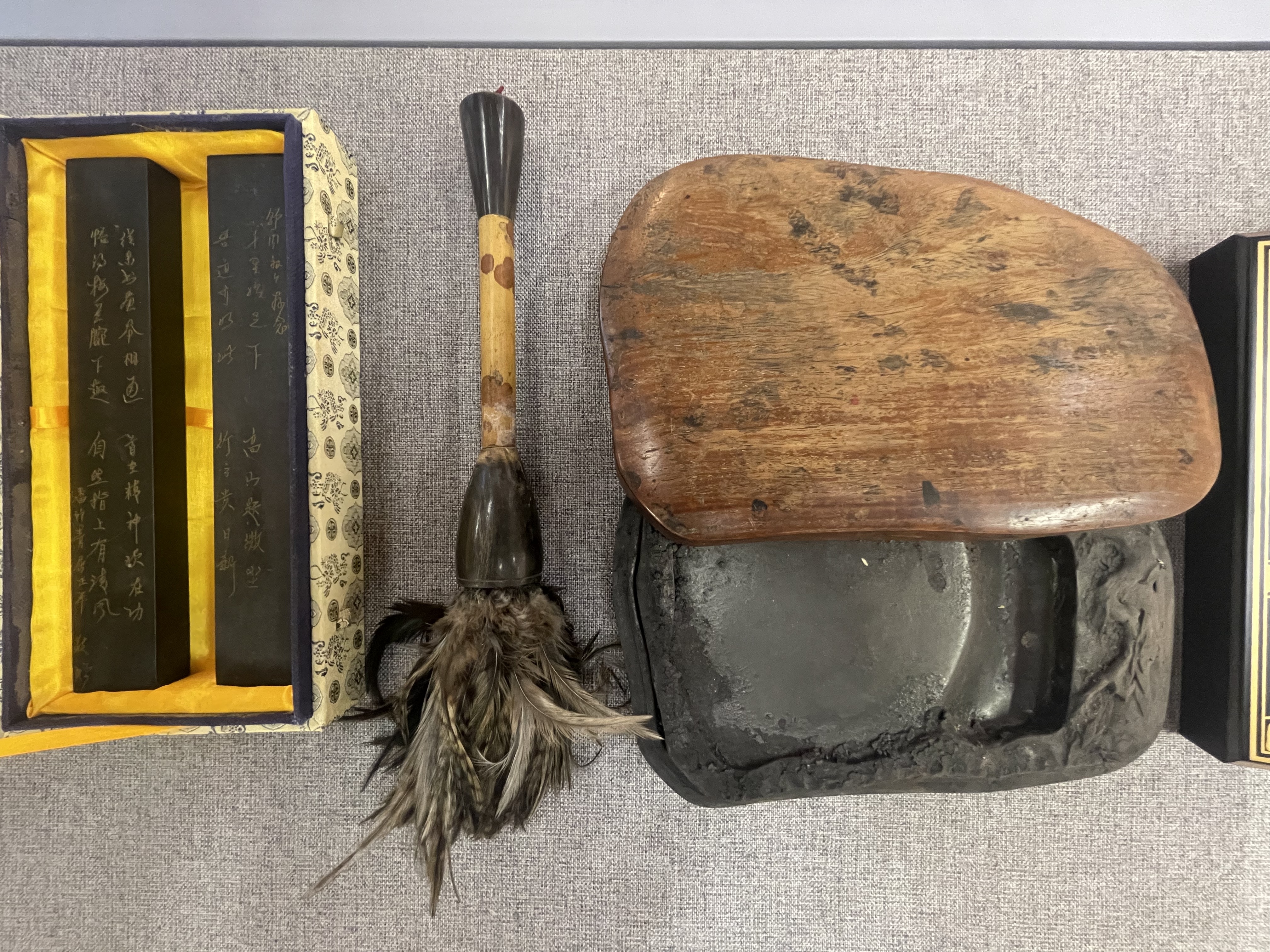
Shu Tong's used writing brush and inkstone
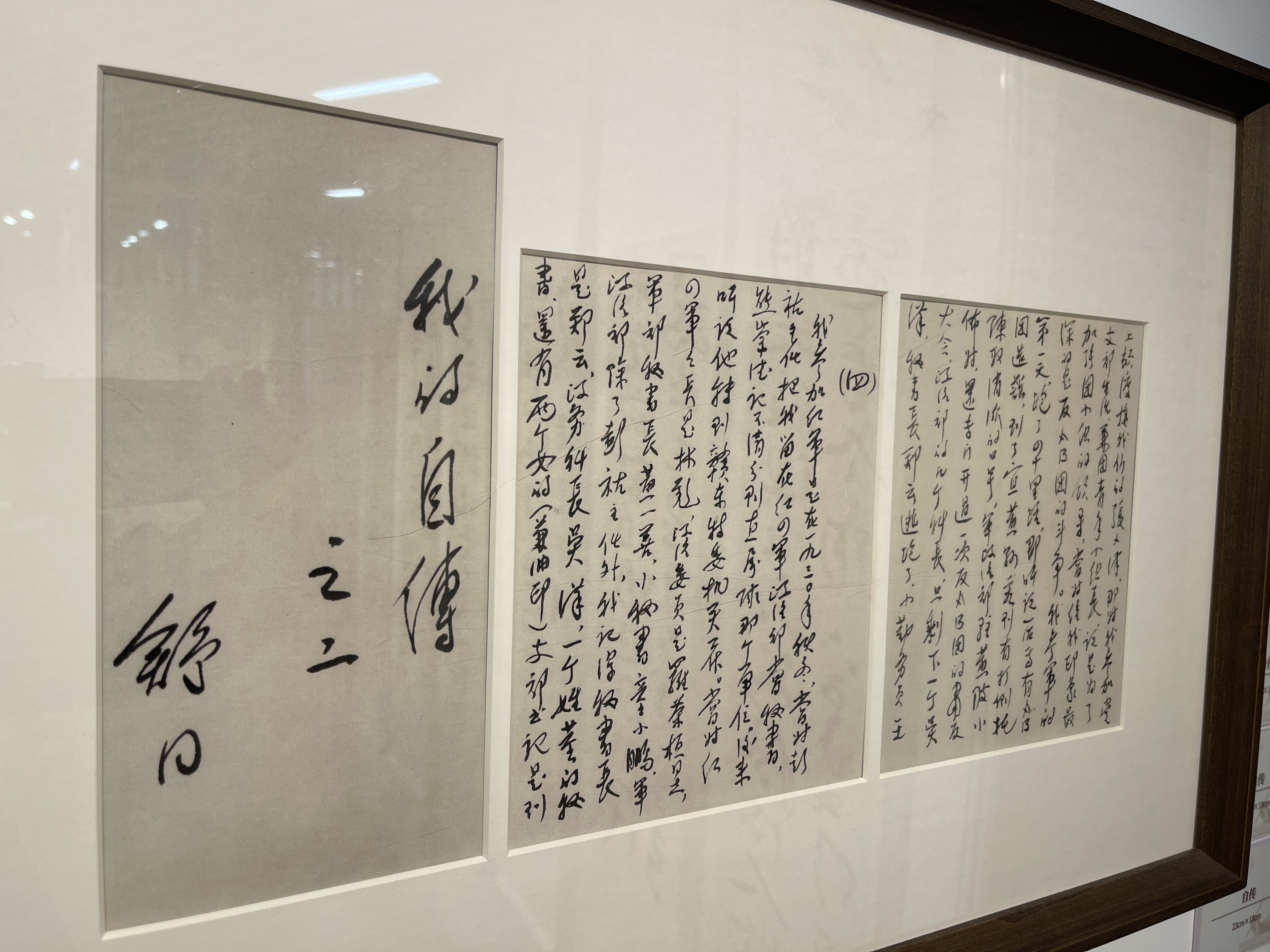
Shu Tong's "My Autobiography" on display.
Shu Tong was born in 1905 into a poor peasant family in Dongxiang County, Jiangxi Province. He began learning calligraphy at the age of five and earned the reputation of "Dongxiang Talent" at fourteen. He later studied the calligraphy of renowned masters such as Yan Zhenqing, Liu Gongquan, and He Shaoji. Influenced by the May Fourth Movement, he and his progressive classmates quickly established the "Jinlan Students' Society" in 1920, and later initiated the organization of the "Marxist Research Society," actively dedicating themselves to the cause of national salvation. In 1925, Shu Tong published "The True Face of the Republic of China," vehemently criticizing the Nationalist government. The following year, he joined the revolution and became a member of the Communist Party of China. His innate love for calligraphy meant that he never put down his brush during those turbulent years, practicing diligently whenever he had free time. Even Chairman Mao Zedong, known for his powerful and majestic calligraphy, considered Shu Tong's work to be of superior quality. Chairman Mao praised him as "a calligrapher of the Red Army, a fine pen within the Party," and repeatedly promoted Shu Tong's calligraphy to various sectors of society.
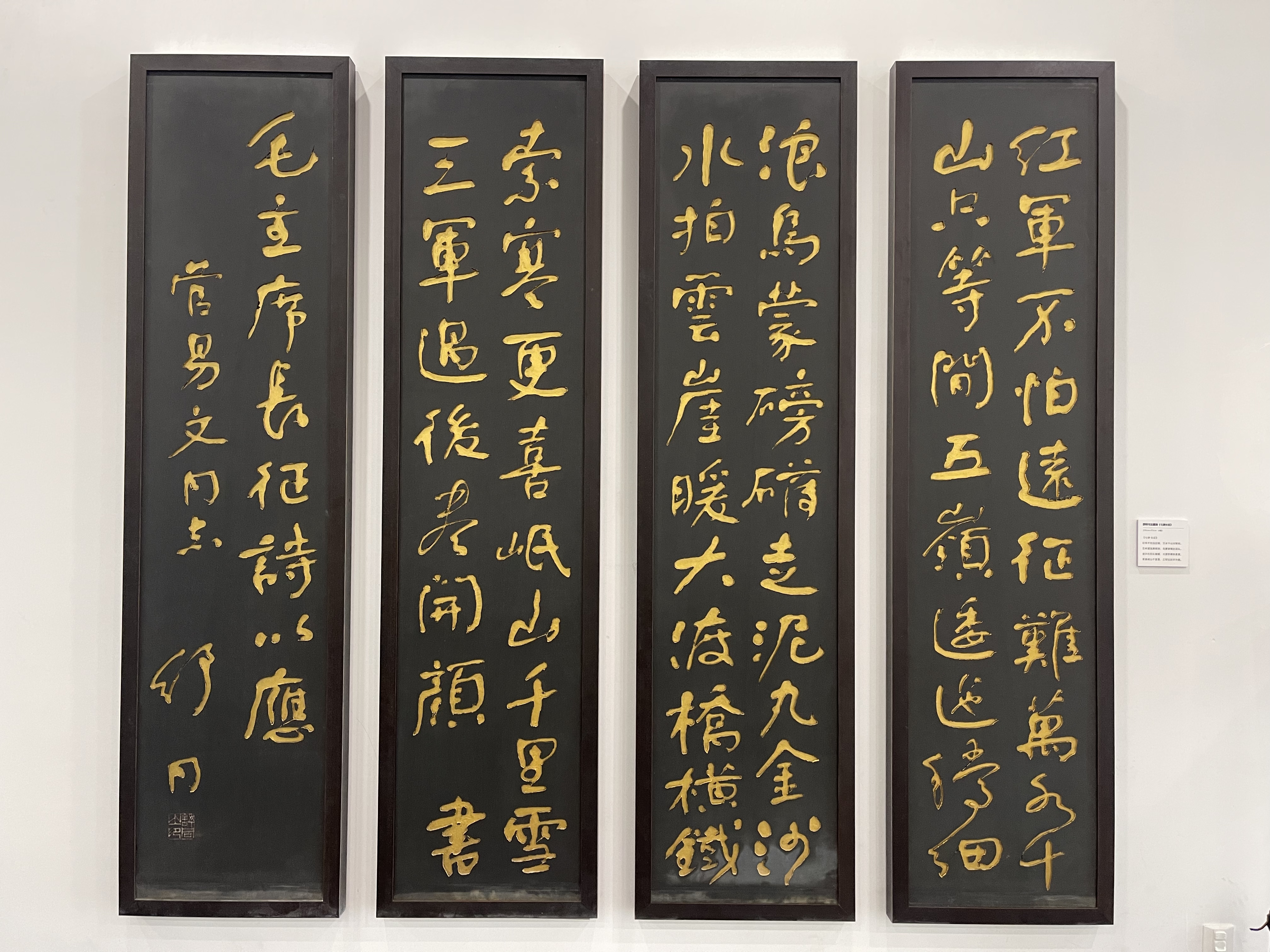
Exhibition site
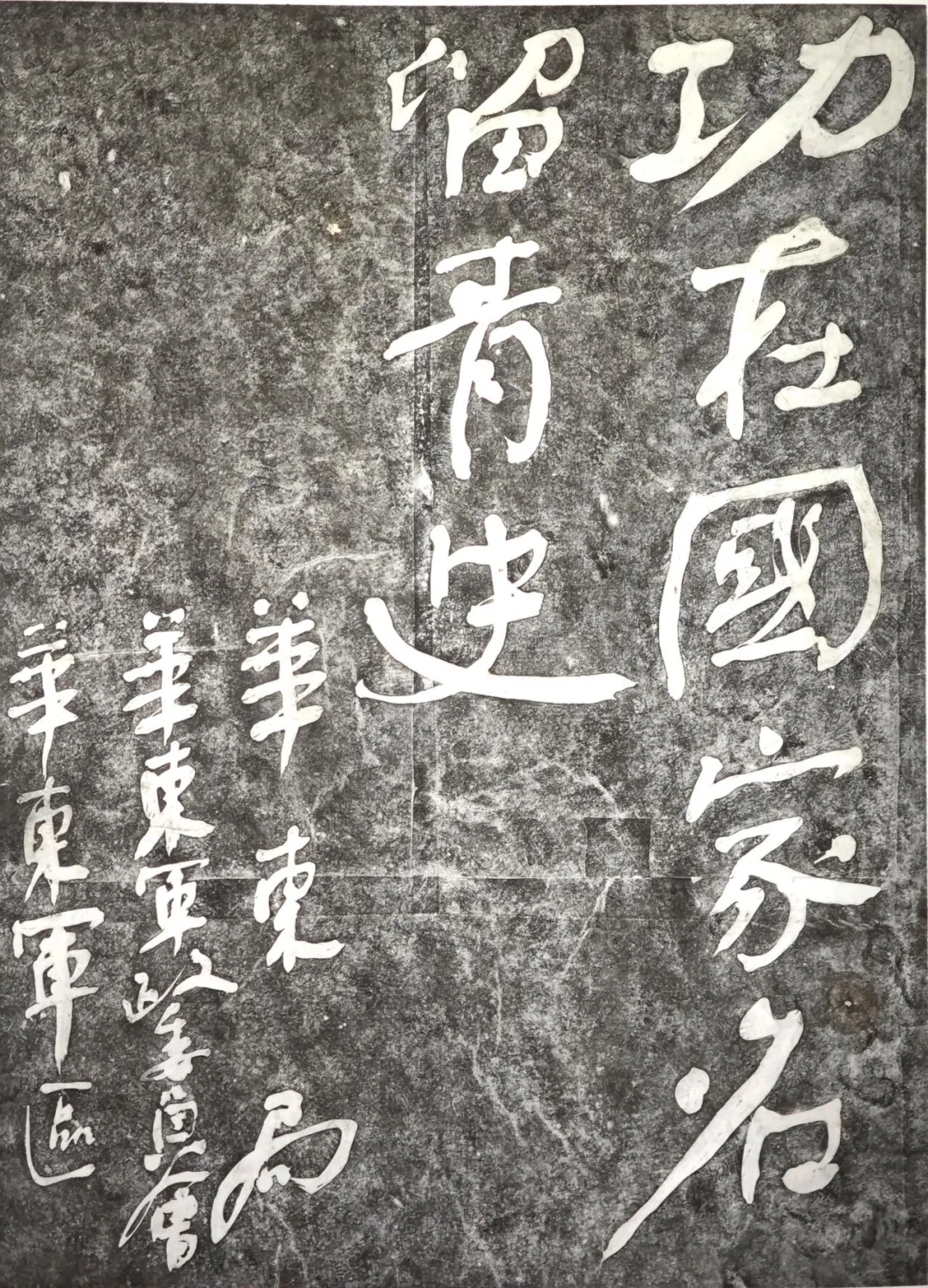
Shu Tong wrote an inscription for the East China Martyrs' Cemetery: "His merits benefit the nation and his name will be remembered in history."
Shu Tong's unique and unreplicable revolutionary and artistic life not only records the transformation of his personal style but also reflects his profound thinking on the art of calligraphy. As the founder of the "Shu style," Shu Tong's calligraphy is like a condensed history of the evolution of Chinese calligraphy—starting from the majestic hall of Yan Zhenqing, then moving to He Shaoji, and finally forming his own unique style.
Shu Tong joined the Communist Party of China in 1926. He not only participated in many key battles such as the anti-encirclement campaigns in the Central Soviet Area and the Long March, but also held important positions during the War of Resistance Against Japan and the War of Liberation. He participated in the establishment of the Jin-Cha-Ji Anti-Japanese Base Area, guided the new-style military reorganization movement of the East China Field Army, and contributed to the advancement of many battles. At the same time, he used his pen as a weapon, founding the "Anti-Enemy Daily," writing the "Chinese Anti-Japanese Military and Political University," and hundreds of anti-Japanese slogans. He not only inspired young people to join the army but also undermined the will of the enemy. He even persuaded a former Qing Dynasty scholar to participate in the government with a letter written in calligraphy, thus becoming a unique force in revolutionary propaganda.
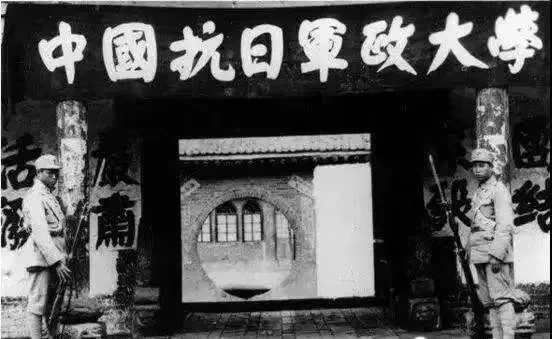
The inscription "China's Anti-Japanese Military and Political University" by Shu Tong

Shu Tong's old photos during the War of Resistance Against Japan

The sign for Dr. Norman Bethune's memorial service, written by Shu Tong in 1939.
His unique "seven-and-a-half-point" calligraphy style, known as the "Shu style," integrates the essence of various calligraphic styles, exhibiting a broad and dignified character. He has inscribed titles and plaques for hundreds of newspapers, universities, and scenic spots, enjoying widespread popularity and recognition among the public. He consistently practices the philosophy of "writing for the people," bringing calligraphy out of the study, enriching the cultural life of the masses, and providing a model for future generations of calligraphers on how to integrate with the times and serve society.
In 1981, 76-year-old Shu Tong spearheaded the establishment of the China Calligraphers Association, the first national calligraphy organization in China's history. This provided calligraphers with a dedicated organization and a sense of belonging, and also established calligraphy's independent status organizationally. He was elected as the first chairman of the China Calligraphers Association. Building on this foundation, calligraphy associations at all levels were established, calligraphy exhibitions flourished, and professional calligraphy journals were launched one after another, ushering in a new era of calligraphy fervor.
He had a deep connection with Shanghai, leaving behind a collection of calligraphic works for institutions such as Shanghai Railway Station, East China Normal University, Tongji University, Shanghai Fisheries University, Huafang Textile Institute, East China University of Chemical Technology, Shanghai First Medical University, Shanghai Second Medical University, Shanghai University of Finance and Economics, Shanghai Theatre Academy, Shanghai University of Sport, Labor Daily, Shanghai Railway Station, and Shanghai Exhibition Center. Among these works, the characters for "Shanghai" have become a symbolic font for the city, and Shanghai has become one of the regions where Shu Tong's calligraphy style is most popular. His calligraphy not only draws on the essence of Shanghai-style culture but also injects vitality into the development of Shanghai-style calligraphy. Furthermore, he takes "writing for the people" as his mission, closely connecting with the pulse of the nation's destiny.

Shanghai Station
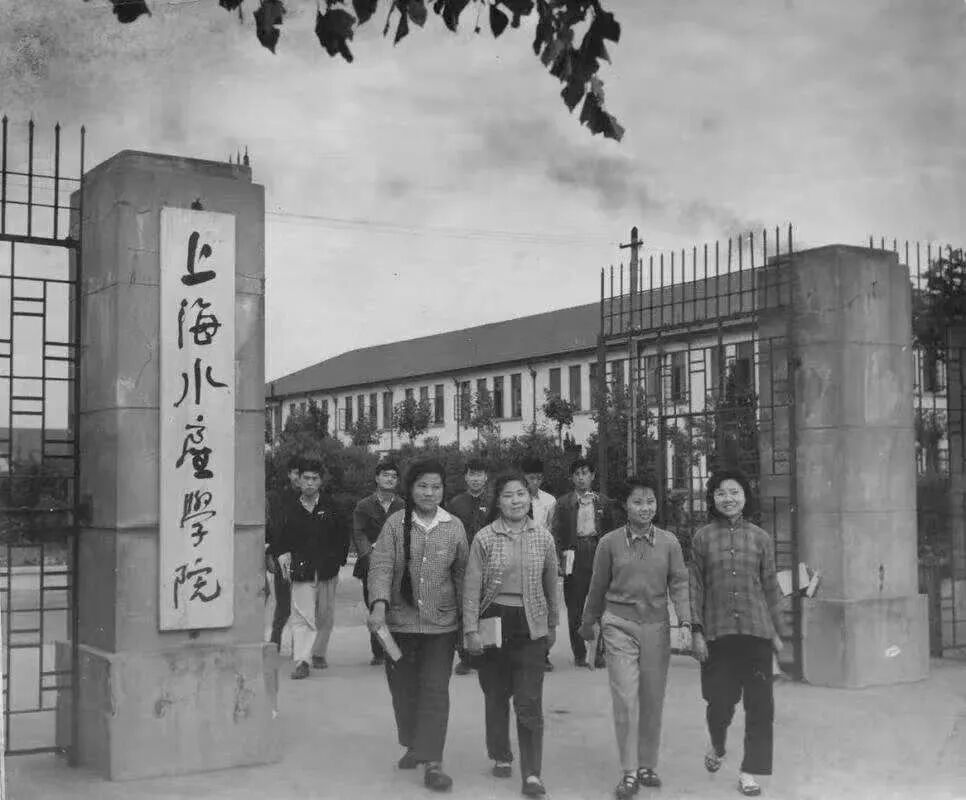
Shu Tong's book, Shanghai Fisheries College
This exhibition, themed "Sweeping Strokes of the Brush," presents over 50 sets (pieces) of reproductions of Mr. Shu Tong's calligraphy works, encompassing various types including his representative large-character calligraphy, works based on Mao Zedong's poems, his own poems, and inscriptions. The exhibition systematically showcases Mr. Shu Tong's artistic journey from his mastery of both calligraphy and swordsmanship during the Long March to the creation of his "Shu Style" calligraphy, highlighting the unique style of his "seven-and-a-half-point" script, which integrates the essence of regular, running, cursive, seal, and clerical scripts with the styles of renowned calligraphers such as Yan Zhenqing, Liu Gongquan, and He Shaoji. Visitors can closely appreciate reproductions of classic works such as "The Long March," "Qing Ping Le: Liupanshan," "Yellow Crane Tower," "Song Qingling's Former Residence," "National Agricultural Exhibition Hall," and "Xujiaya Reservoir," experiencing the powerful spirit and contemporary relevance contained within his brushstrokes.
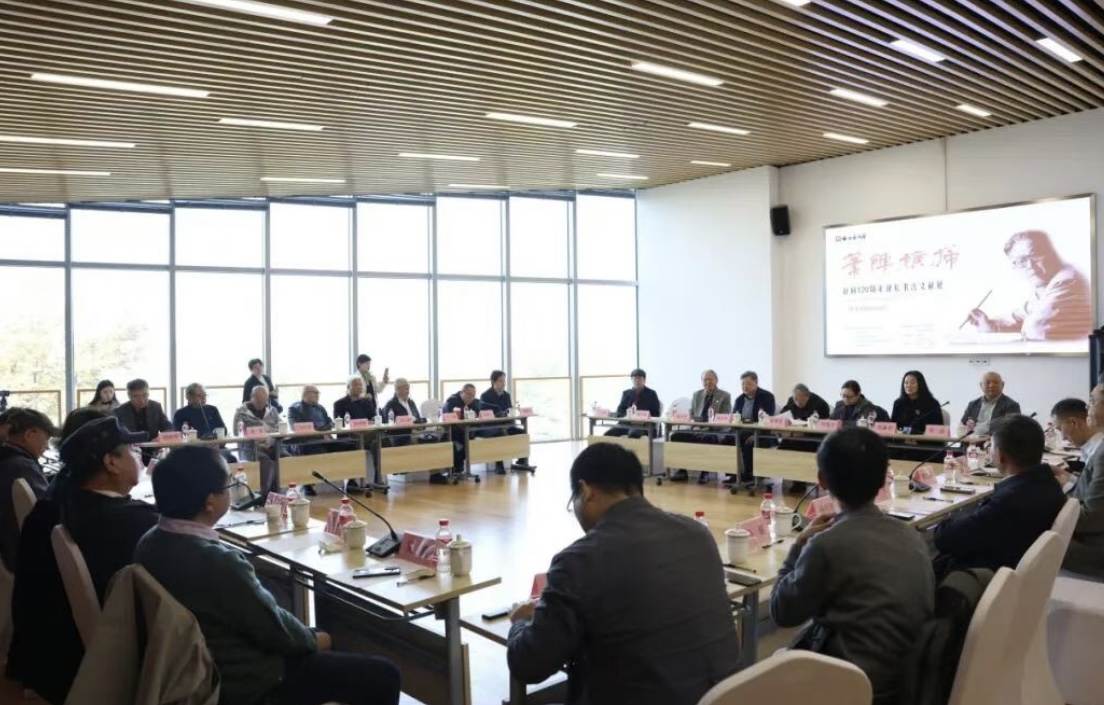
"Sweeping Brushstrokes—A Calligraphy Academic Exchange Meeting Commemorating the 120th Anniversary of Shu Tong's Birth"
The calligraphy academic exchange meeting held on the opening day of the exhibition brought together more than 40 calligraphy scholars, well-known calligraphers, and critics from all over the country. The participants either analyzed the origins and artistic characteristics of Shu Tong's calligraphy from the perspective of calligraphy itself, or explained the reasons why Mr. Shu Tong was so highly respected from historical and social perspectives.
Tong Shiping, a military calligrapher, general, and former deputy director of the General Political Department of the Chinese People's Liberation Army, recalled: "Comrade Shu Tong was a senior proletarian revolutionary with profound experience and high moral standing. He was also an outstanding calligrapher. After serving as the first chairman of the China Calligraphers Association, he made important contributions to promoting the development and prosperity of calligraphy."
In a video speech, Chen Zhenlian, Vice Chairman of the China Federation of Literary and Art Circles and Vice President and Secretary-General of the Xiling Seal Engraving Society, said, "He is a senior whom I deeply admire and respect. If we look back at the history of contemporary calligraphy, especially in terms of the historical positioning of calligraphy, I think the first person we should commemorate should be Mr. Shu Tong. Many famous calligraphers may have achieved great success, but in terms of playing the decisive and authoritative role of Mr. Shu Tong, I'm afraid even the most outstanding calligraphers cannot do that."
Ding Shenyang, vice chairman of the Shanghai Federation of Literary and Art Circles and chairman of the Shanghai Calligraphers Association, said that Mr. Shu Tong was a milestone figure in the history of Chinese calligraphy. He created the "Shu style", and very few modern calligraphers can be called "Shu style". "His artistic characteristics, in terms of brushwork, are roundness and thickness, and also a kind of unpretentiousness. He has a kind of unpretentiousness in his grand style. Most importantly, his calligraphy has the concept of hidden strength in softness, which mainly benefited from his seal script style. His technique was inherited from He Shaoji.

In the 1980s, Shu Tong (right), the first chairman of the China Calligraphers Association, and Qi Gong, the vice chairman.

Shu Tong's old photo at the first event of the China Calligraphers Association
Zhang Xiaoyu, Deputy Secretary-General of the China Calligraphers Association, delivered a speech on behalf of the China Calligraphers Association at the exchange meeting.
Pan Shanzhu, vice chairman of the China Calligraphers Association, said that as a historical figure, Mr. Shu Tong must have left a strong mark on the history of Chinese calligraphy. With his distinctive calligraphic style (the highly recognizable Shu style) and the "Shu Tong Handwritten Running Script Font Library" launched by Peking University Founder Group, we have every reason to believe that Mr. Shu Tong's calligraphic art will be widely spread and preserved.
Zheng Yiwen, vice chairman of the Shanghai Federation of Literary and Art Circles and chairman of the Shanghai Literary and Art Critics Association, said that in terms of upholding the orthodoxy and innovating in calligraphy, and inheriting the past and establishing the present, Shu Tong has achieved the creative transformation and innovative development of traditional culture and art. The "Shu style" is a natural combination of the humility and righteousness of traditional Confucian scholars and modern enlightenment, showing a wider popular and people-oriented nature.
Zhu Peier, president of the Chinese Calligraphy magazine, said that the young Shu Tong used his brush as a weapon, closely linking the essence of calligraphy with the vital forces of the nation's destiny—between the lines, one can feel the burning passion and fearless spirit of fighting for ideals. He transformed writing from a mere desk ornament into a battle cry, giving the art of calligraphy an unprecedented and powerful force.
Mao Shi'an, former vice chairman of the China Federation of Literary and Art Circles, said that it was very important for Shu Tong to start with Yan Zhenqing's calligraphy. Among calligraphers, he was perhaps one of the very few who could communicate with Yan Zhenqing on a spiritual level. "Yan Zhenqing was the most patriotic calligrapher in Chinese history, and he ultimately sacrificed his life for his country. This spirit is common to his generation when they saw the country in peril. Therefore, he learned not only the form but also the spirit of Yan Zhenqing, both of which share a deep sense of patriotism."
Regarding the question of what Shu Tong's calligraphy left for Shanghai, Chen Xiejun, the former director of the Shanghai Museum, said, "His artistic path also incorporated the cultural spirit of Shanghai, including creativity, innovation, composure, and the spirit of embracing diversity. Mr. Shu Tong further nurtured the cultural spirit of Shanghai with his personal charm and the spirit of calligraphy."
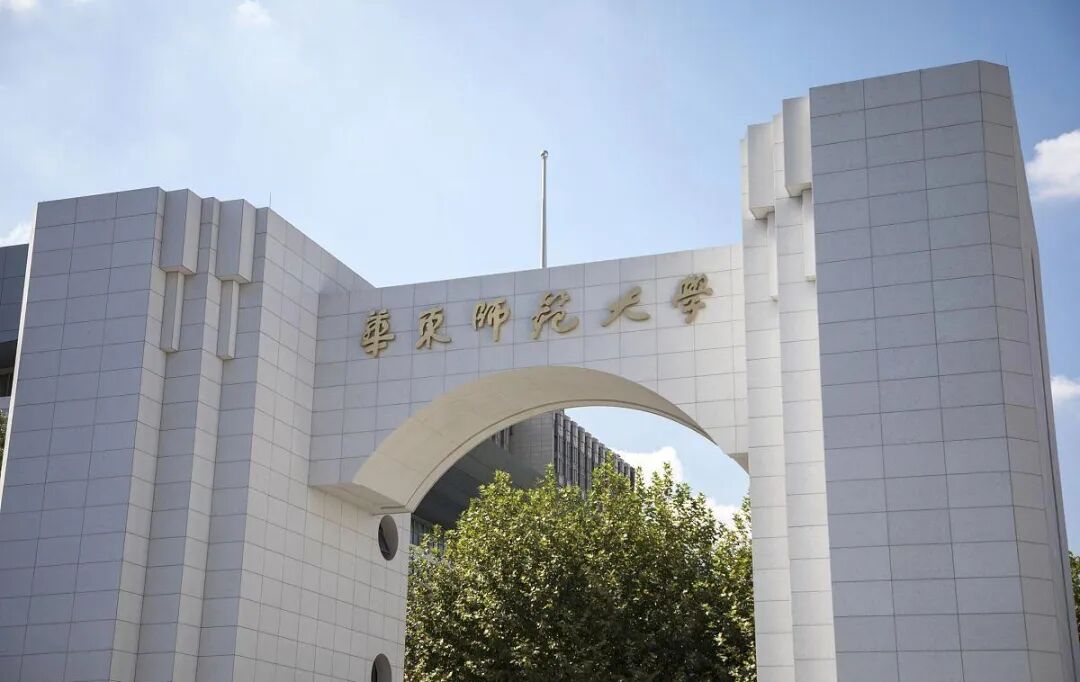
The inscription for East China Normal University by Shu Tong
Shao Jianwu, a well-known editor and senior commentator of People's Daily, recalled: "I once visited Shu Tong's home and saw at least 300 calligraphy works on his table and the floor. At home, he constantly wrote calligraphy in various styles, some of which were for copying, but not only copying. He actually used writing to express his state of mind. He only wrote the 'Shu style' when he was outside."

Shu Tong's calligraphy of Lu Xun's poems in clerical script
Calligraphy critic Ma Xiao once saw Shu Tong wielding his brush in Lanzhou. He said that Shu Tong held a prominent position in politics and culture, yet he remained composed and even considered his lifelong passion for calligraphy as a "secondary pursuit." He was the first chairman of the China Calligraphers Association, but during his tenure, he never held a solo exhibition, published a collection of his works, or took on any disciples. "Even more remarkably, in the 1980s, at the height of his fame, he resigned from the position of chairman of the China Calligraphers Association! His first solo exhibition was held only after he resigned. What is admirable about Shu Tong is that despite his close proximity to politics and his high-ranking position, this did not hinder the improvement and deepening of his calligraphy skills. His achievements in calligraphy were not due to his high-ranking position. The most remarkable point is that when He Shaoji's calligraphy became almost a trend after the late Qing Dynasty, Shu Tong made the greatest contribution in this regard."
Wei Ligang, a contemporary artist who had interacted with Shu Tong, recalled that Shu Tong was undoubtedly a master calligrapher of his generation, a man with a political background. His inscription for the "Chinese Anti-Japanese Military and Political University" was like a banner, carrying fervent revolutionary passion and an unwavering belief in victory, a veritable beacon. The Anti-Japanese Military and Political University was a cradle where the revolutionary seeds of the Communists gathered, a cradle poised for explosive growth. The battle slogans Shu Tong wrote on walls while on horseback and during marches were "propaganda teams and seed-sowing machines." He discussed calligraphy with Mao Zedong and maintained close relationships with figures like Soong Ching-ling. After 1949, many government institutions and universities bore his calligraphy. Shu Tong's calligraphy was based on Yan Zhenqing, incorporating elements of Fu Shan, He Shaoji, and Qian Nanyuan. The plaques I have seen inscribed by him are truly awe-inspiring, towering figures, exemplary models of calligraphy.

A poem written by Shu Tong
Shen Wenzhong, president of the Shanghai Yanhuang Culture Research Association and former full-time vice chairman of the Shanghai Federation of Literary and Art Circles, said that if Yan Zhenqing is a model of ancient Chinese intellectuals, then Shu Tong is undoubtedly a model or exemplar of contemporary revolutionaries and calligraphers.
Scholars at the conference stated that Shu Tong's contribution to modern Chinese calligraphy was not primarily his unique "Shu style," but rather his pioneering spirit. His "seven-and-a-half-point" calligraphy perfectly embodies the high degree of integration between his military career, revolutionary sentiments, and artistic pursuits. It reflects the spirited and energetic nature of the era, showcasing a high level of thought and sentiment. He was an inheritor of traditional calligraphy and also a crucial promoter of calligraphy art in the new era. As one of the founders of the China Calligraphers Association, he greatly expanded the development space of calligraphy art in contemporary times, thus rightfully becoming its first chairman. Subsequently, he voluntarily resigned as the sole candidate in the second chairmanship election, choosing instead to serve as honorary chairman, intending to break the then-prevalent lifelong tenure system within the association, fully demonstrating the noble character of the older generation of revolutionaries.
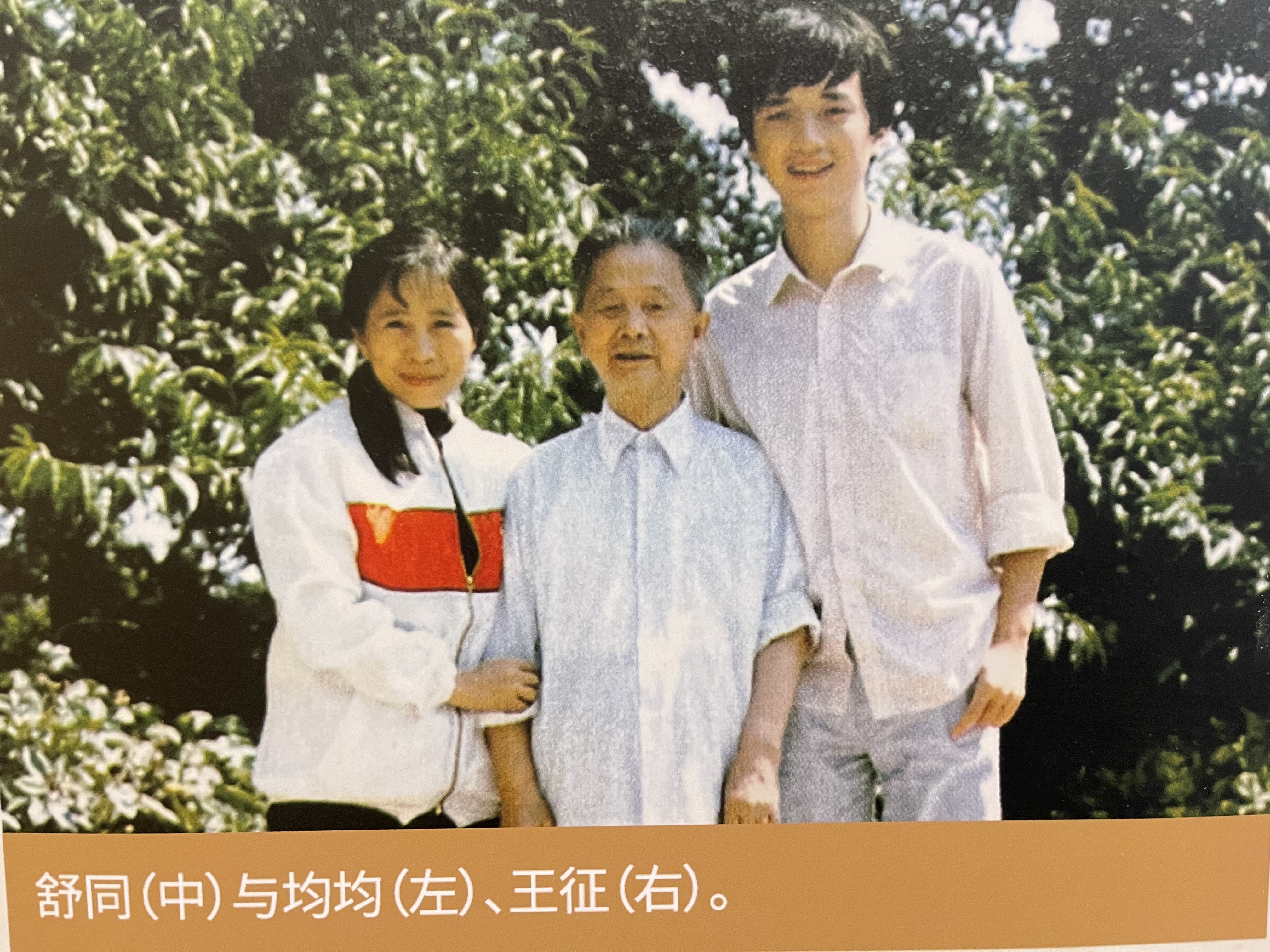
Shu Tong's Old Photos
Participants agreed that Shu Tong, as a key figure in the modern transformation of Chinese calligraphy, deeply integrated revolutionary sentiments and cultural ideals into his artistic practice. The "Shu style" he created was not only a creative transformation of traditional brushwork, but also established a unique aesthetic system that bridged structure, spirit, and the spirit of the times, embodying the conscious pursuit that "brush and ink should follow the times." As stated in the preface to the 120th anniversary commemoration of Shu Tong by the China Calligraphers Association, "Mr. Shu established virtue, merit, words, and art, forging an immortal monument in the history of the Chinese revolution and contemporary calligraphy."
This academic exchange commemorating the 120th anniversary of Shu Tong's birth was chaired successively by Zhang Lixing, Wang Lixiang, and Gu Cunyan. The document exhibition and exchange meeting were hosted by the Shanghai Literary Critics Association, Calligraphy Magazine, and the Shanghai School of Art Museum, among other institutions.

Shu Tong's calligraphy: Excerpt from Li Bai's poem "Singing on the River" (Tang Dynasty)

Shu Tongshu 's poem "Qing Ping Le - Liupanshan" by Mao Zedong
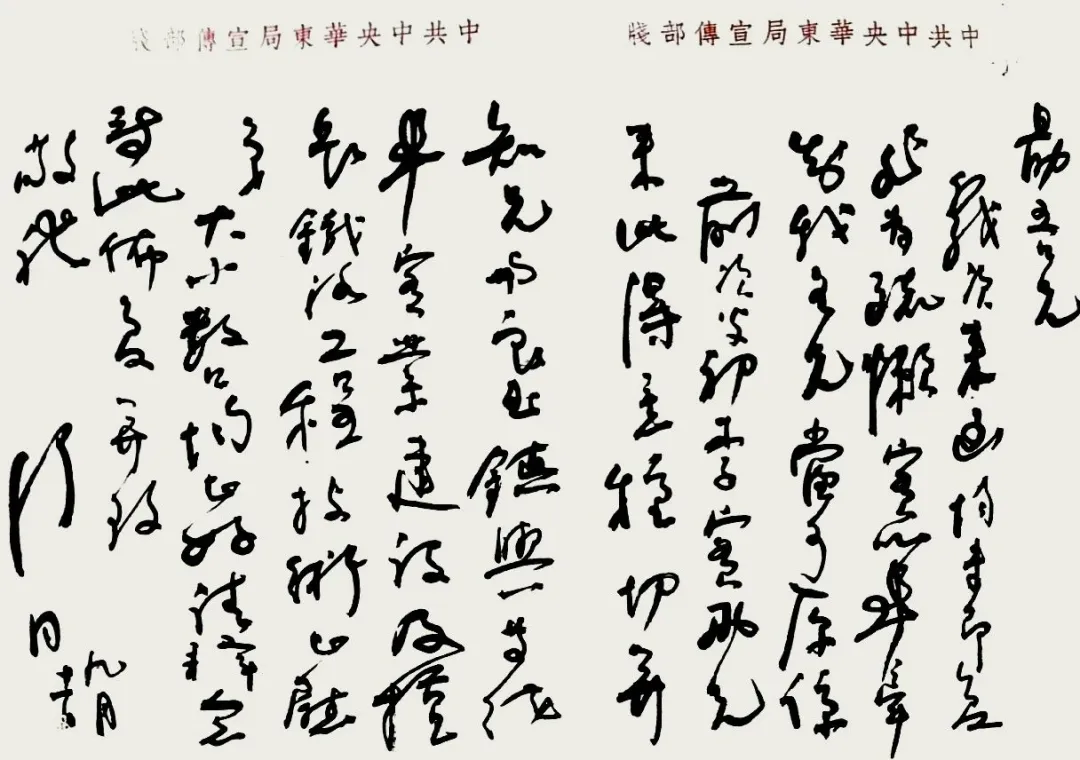
Shu Tong's Letters

Shu Tongti: Xujiaya Reservoir
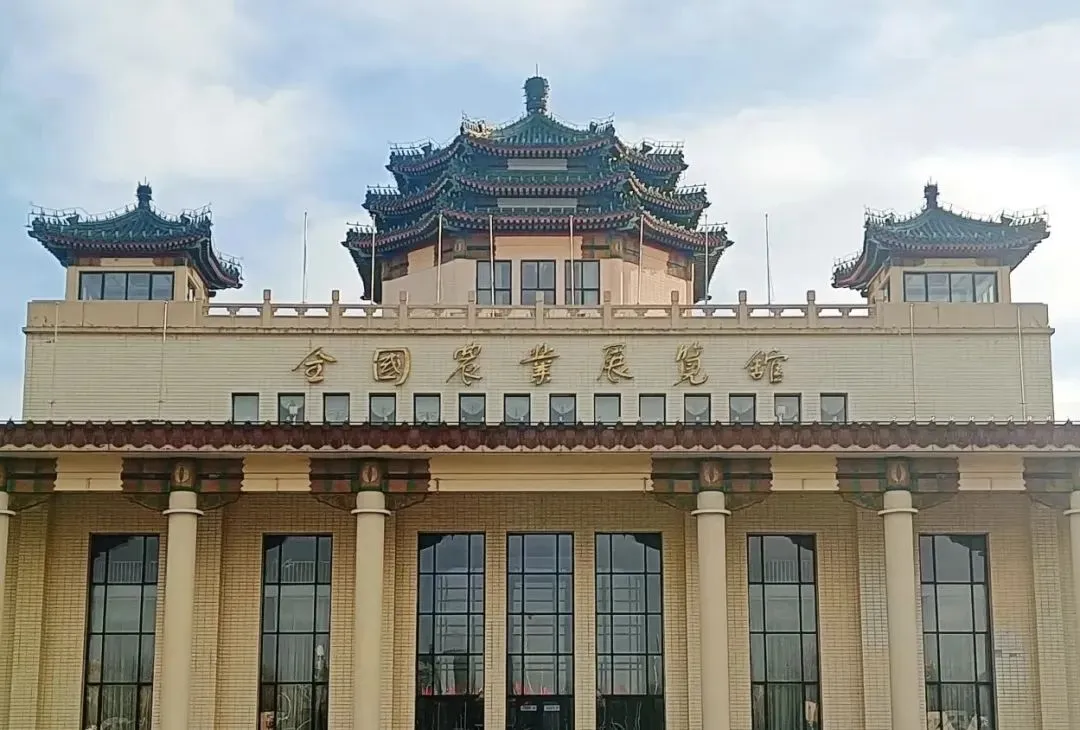
Shu Tong wrote about the National Agricultural Exhibition Hall

Title: Former Residence of Comrade Soong Ching-ling

Shu Tong's poem: Yellow Crane Tower
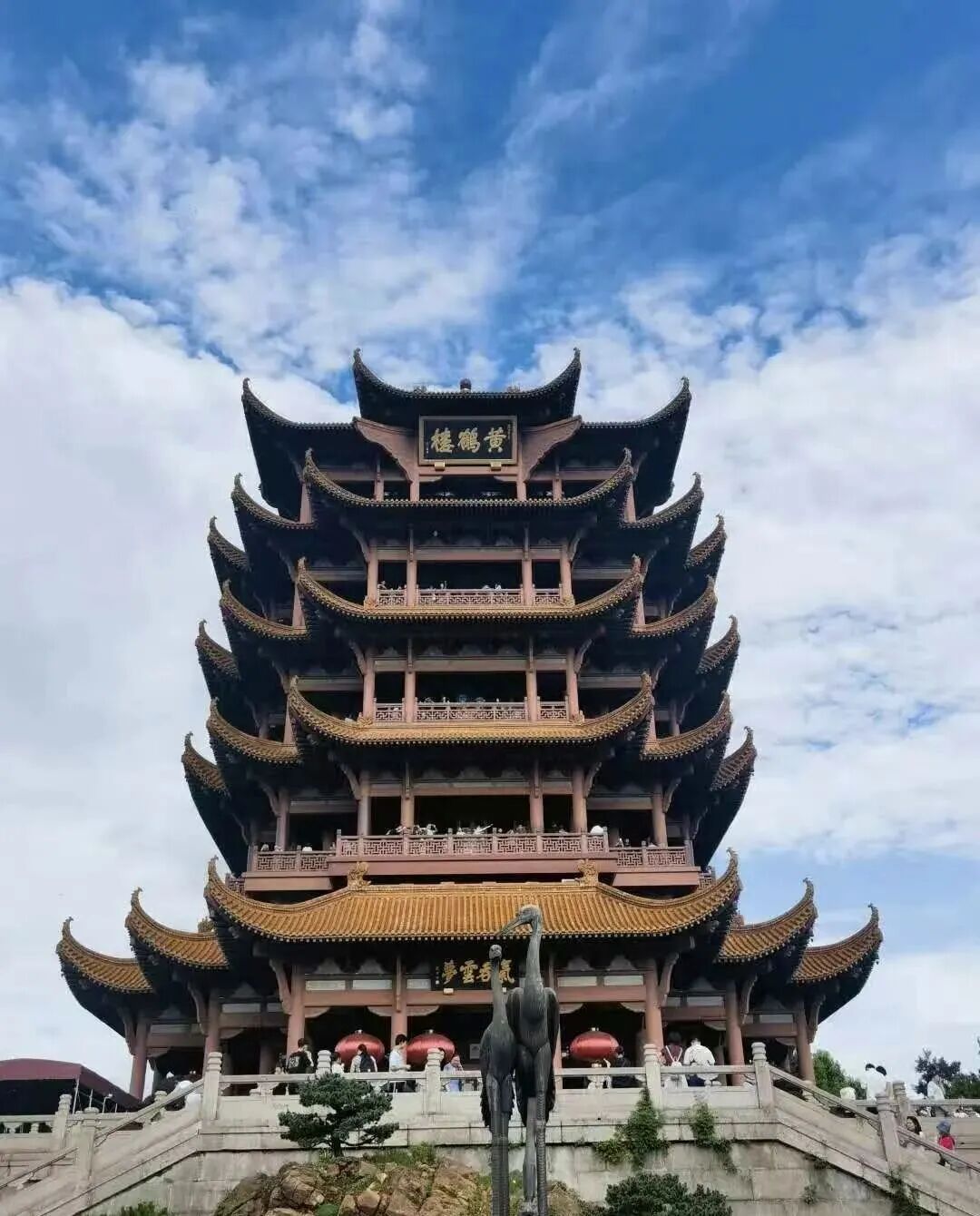
The inscription by Shu Tong on the Yellow Crane Tower in Wuhan

